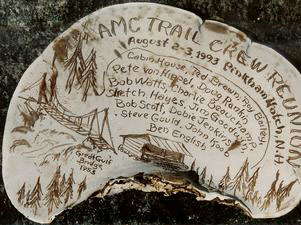History
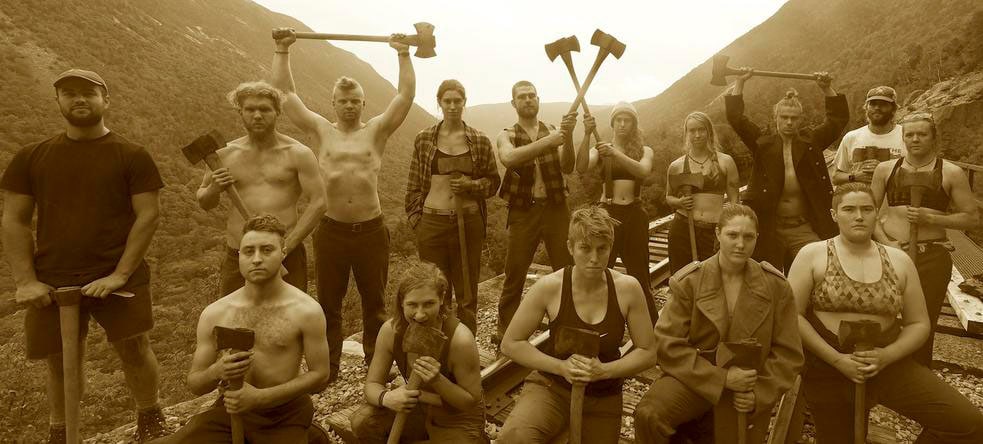
The first recreational trails made by Anglo-American settlers in New Hampshire's White Mountains were created in the early 1800s. One of them, the Crawford Path created in 1819, is the oldest recreational trail in continuous use in the United States. Most of these early trails faded away by the mid-1800s. Then, following the Civil War, there was a renaissance of new trail construction and old trail revival, much of it spearheaded by the Appalachian Mountain Club (AMC) following its founding in 1876. In 1916 the AMC Councillor of Improvements C.W. Blood announced that the Club now had "a through route over its own trails for the entire distance from the Pemigewasset Valley to Gorham."
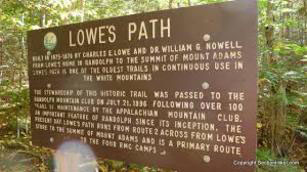
In 1919 the AMC Department of Improvements realized that the existing system of trail maintenance was no longer sufficient and the AMC White Mountain Trail Crew was born. For its first 50 years, the Trail Crew focused on making the existing AMC trails accessible to the public. Standard tasks included early season patrolling to cut out trees blown down during the intervening seasons, clearing brush and limbs to create a clear passageway 4 feet wide and 8 feet high, designing and installing bridges across major water crossings, creating and hanging trail signs, and installing and maintaining a system of shelters throughout the trails system.
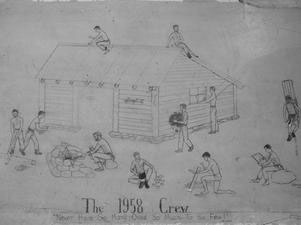
By the late 1960s hiker use had increased dramatically. The AMC's first cut trail, Lowe's Path, was approaching its centennial in 1976 as were many other trails. Some trails, especially those by J. Raynor Edmands, had been meticulously laid out and constructed on gentle gradients over long periods of time. Other trails, such as the Webster Cliff Trail, were laid out and 'constructed' in a week or less, with a gradient very similar to a skier's fall line. By the early 1970s almost all trails showed signs of erosion damage ranging from moderate to severe. The seventies saw the Trail Crew's focus shift from maintaining the public's access to the trails to sustaining the trails' very existence from too much access by a sometimes over-enthusiastic public. This tension between access and sustainability was articulated as early as 1966 in an Appalachia article by Trail Master Alan Thorndike.
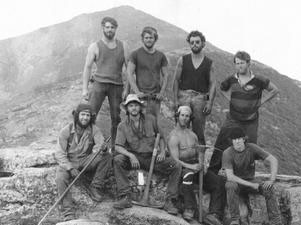
The early Crews worked with wood, chopping out blowdowns, hanging wood signs, making wood shelters from native materials, installing bridges of dimension wood. During the transition to hardening trails to prevent erosion, the transitional crews first turned to wood: wood water bars, split-log bog bridges, wooden steps, wood cribs filled with rock. While wooden water bars and bog bridges can still be effective, steps and cribs are now made of rock. Staircases are rock, screewalls of various size and uses are made of rock. Crews still do long days of early season patrolling, but the bulk of their season is spent doing rock work.
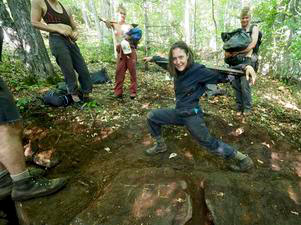
The Trail Crew Association (TCA) was formed in 1952 to connect and support what is now the AMC White Mountain professional Trail Crew and Shelter Caretakers. The first formal Reunion was convened at the home of Roy Bailey in November, 1948. TCA was organized four years later to foster an ongoing sense of community and outreach amongst the trail crew community led by Heinrich "Hix" Henrich, a member of the 1924 crew and later a lawyer in Hopkinton, Massachusetts. The founders asked for annual dues of $1.00 to fund the mailing of the their November newsletter, Chips and Clippings. Dues are higher today, but the mission remains the same. Dues today support the continued annual paper and electronic publication of Chips and Clippings, the monthly digital eNewsletter named Steps and Scree, supports the maintenance and upgrade of the trail crew cabin, annual reunions, and various crew-led activities throughout the years.
